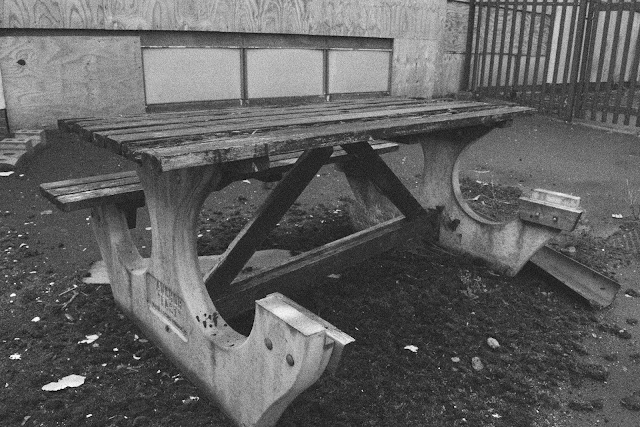
Here is an image taken from my eighth shoot, which captured themes of urban decay and abandonment. This was taken at the site of an abandoned school that is soon set for demolition, which has not been in use for around 6 years. Parts of the school have been professionally demolished, and this professional demolition is visible in this image. I took this while just outside what was the astro turf playing field, which had been professionally pulled up, creating a very rough and uneven surface, and with that some very rough textures, which create connotations of the uncertainty of whether buildings under jeopardy will last or get abandoned like this one. In the foreground of the image is the fence that went around this astro turf field, which has since been destroyed, with most of the metal netting having peeled away and collapsed onto the floor. The fences being collapsed could represent the fact that this building was once a school, which is a protected environment but since being abandoned is now completely unprotected and open for anyone to access. I processed this image into black and white and added noise, creating the gritty and urban aesthetic that I tried to create for this shoot.

This is an image by New Zealand born, New York based urban photographer Anna Delany. This image combines rural and urban photography, as it was taken in a field, however, it contains a hut with no windows or door which has been covered in graffiti. The image has been captured in black and white, creating a wide tonal range, with the hut and the grass in the mid ground creating some light tones, which are contrasted by the dark sky and the dark trees in the background. The architecture of the hut looks very urban and links to the brutalism movement, which is something a lot of Delany's work captures. The presence of such hut within a rural environment could suggest that the rapid urbanisation from the 1960s onwards has somewhat failed, as this urban structure has clearly been abandoned. Graffiti on the hut can be taken as representing the presence of urban decay.
My image has been inspired by the image Anna Delany took. The subject matter of Delany's works is urban decay, and they are always taken in black and white; I tried to find a decayed and abandoned location in Harlow Town to reflect this theme, eventually choosing the site that was once Passmores School. Delany's use of black and white creates a wider tonal range for the image as well as being a stylistic choice, which is something I took note of throughout my shoot. You can see same sharp dark and light tones throughout my image that are present in Delany's image, creating a smooth and rich feeling to the image. I also took note of Delany's use of texture to portray urban decay, adding noise to my image to give the textures a rougher and more gritty quality.








































































